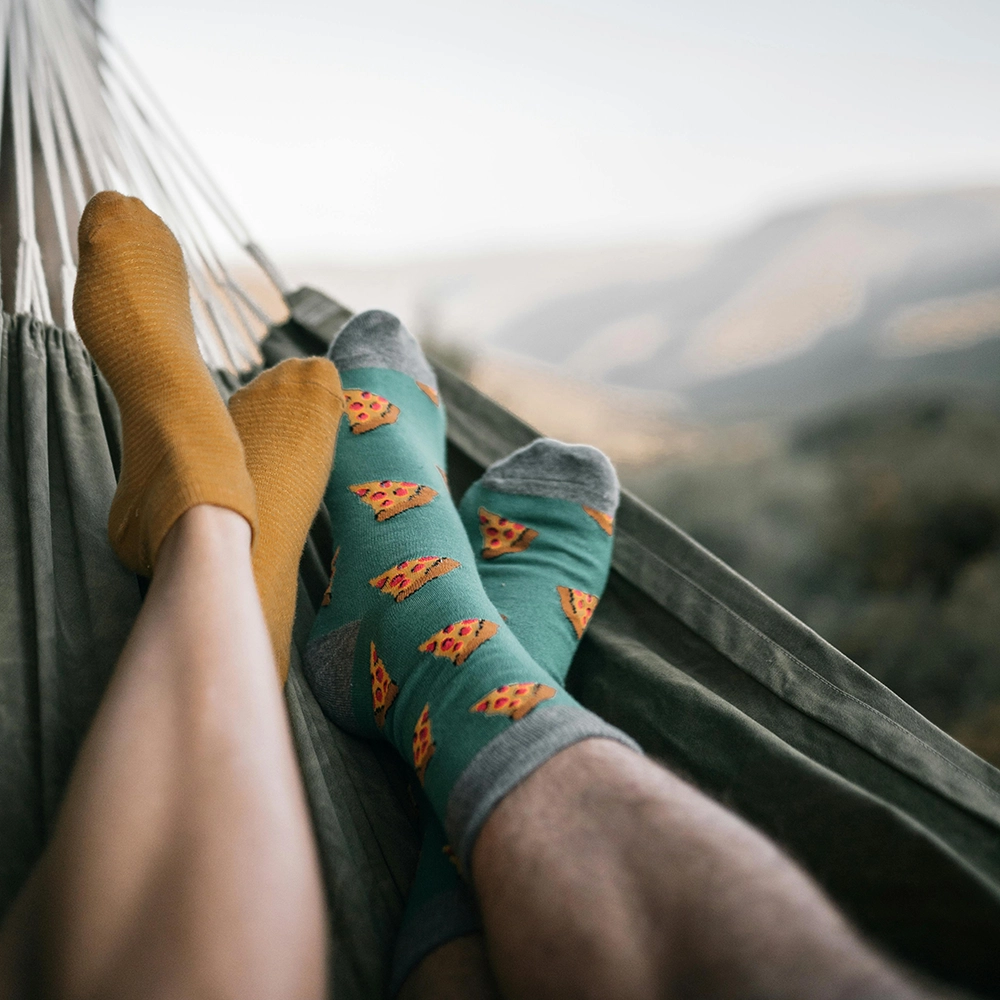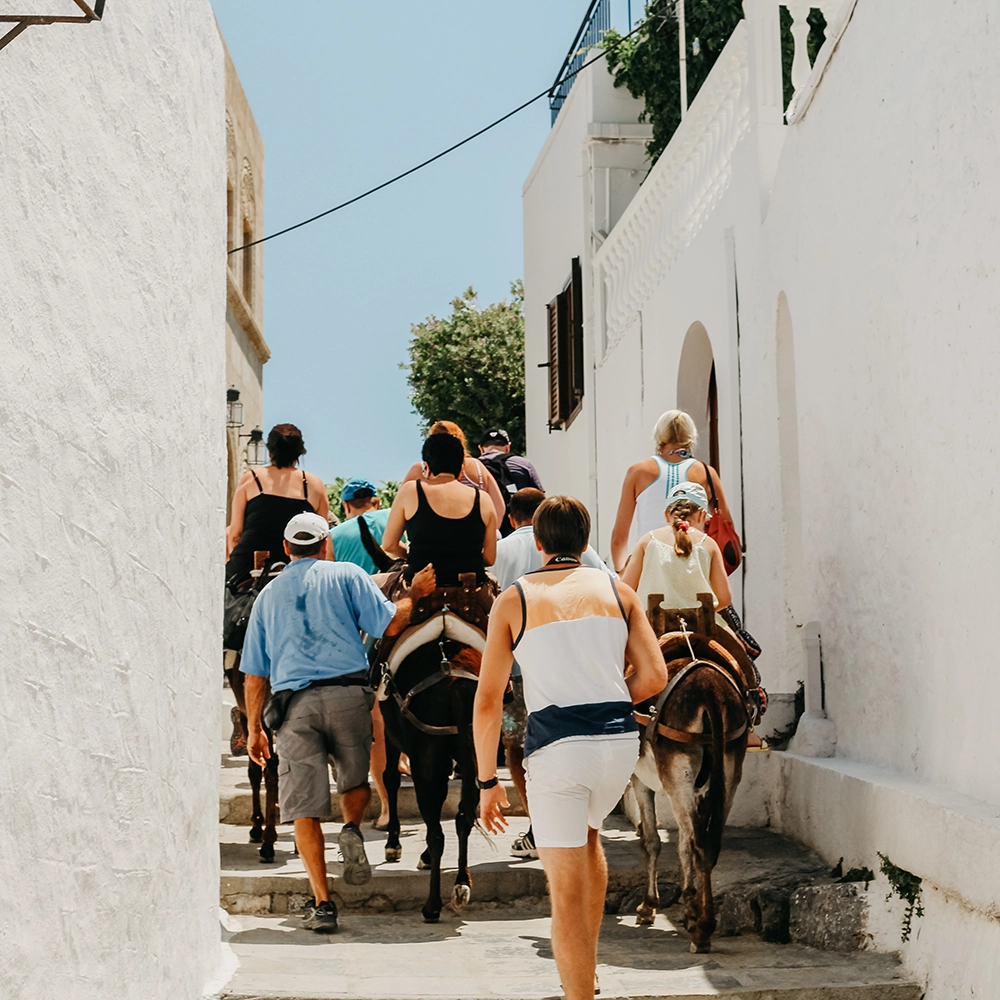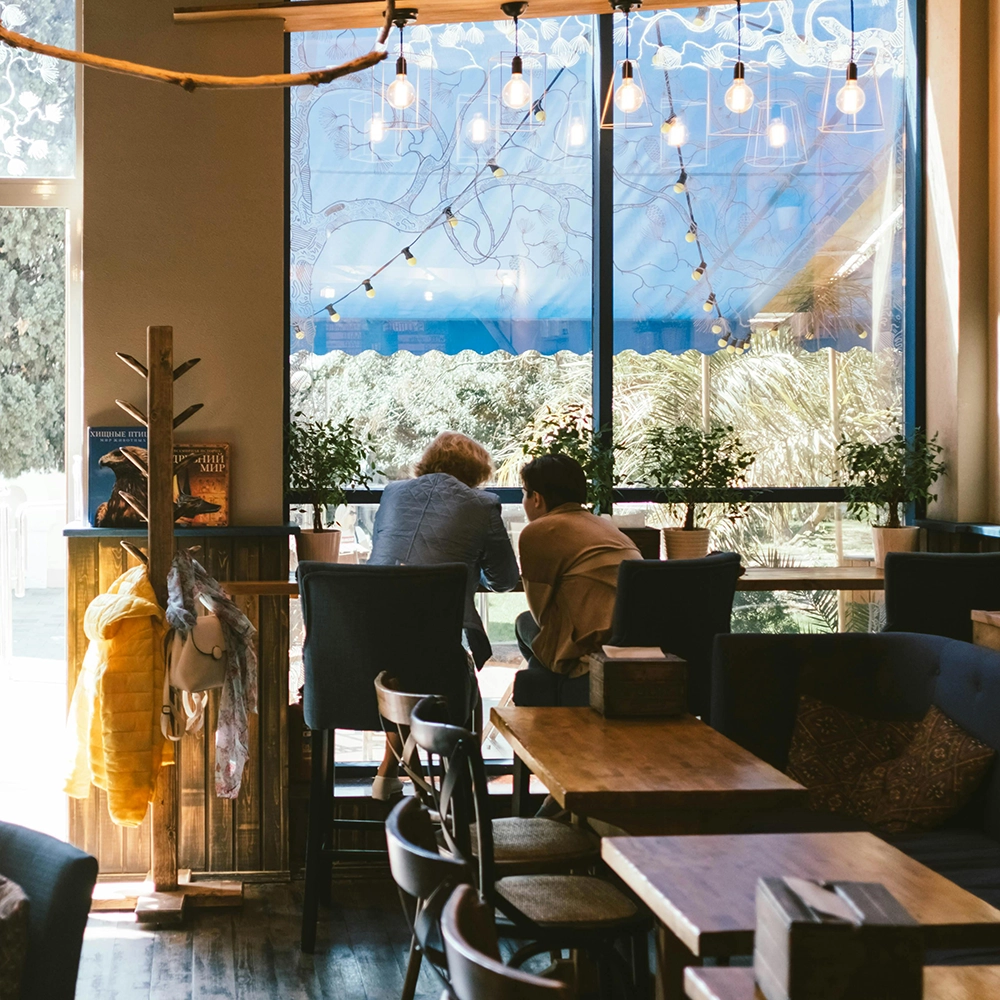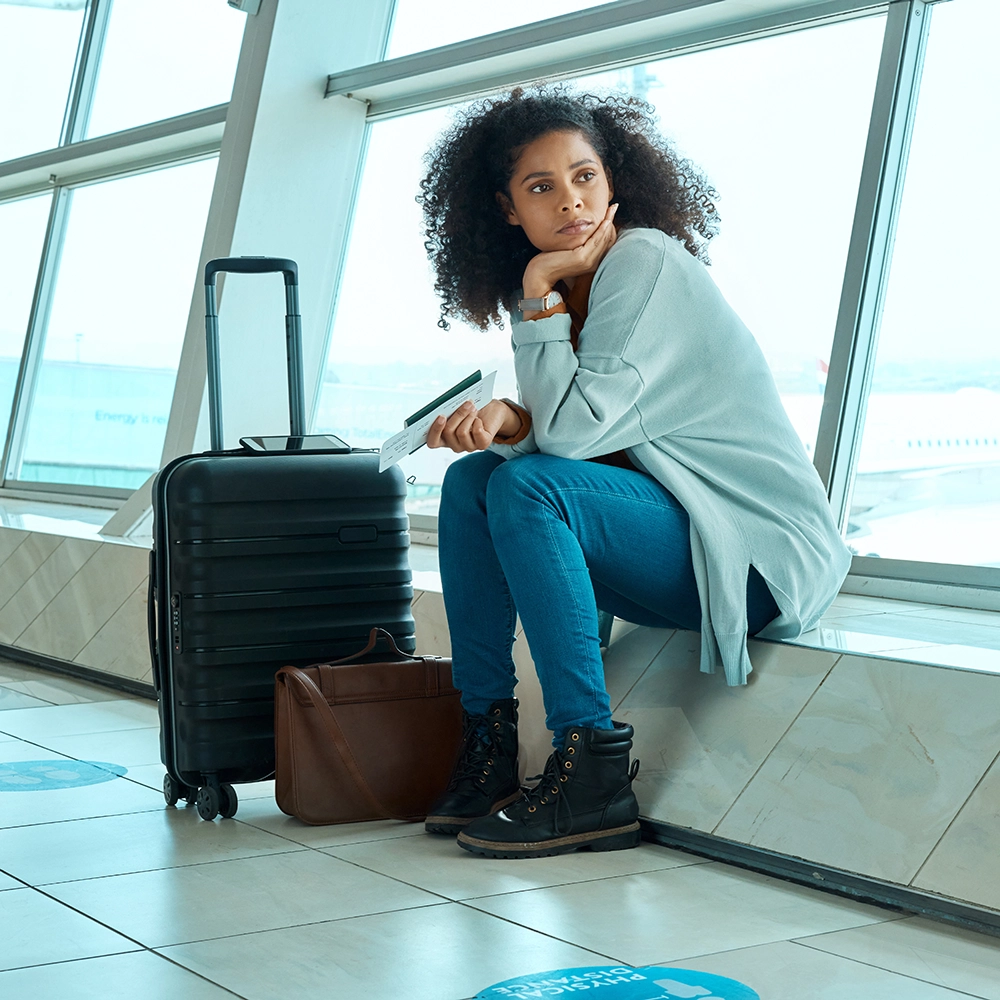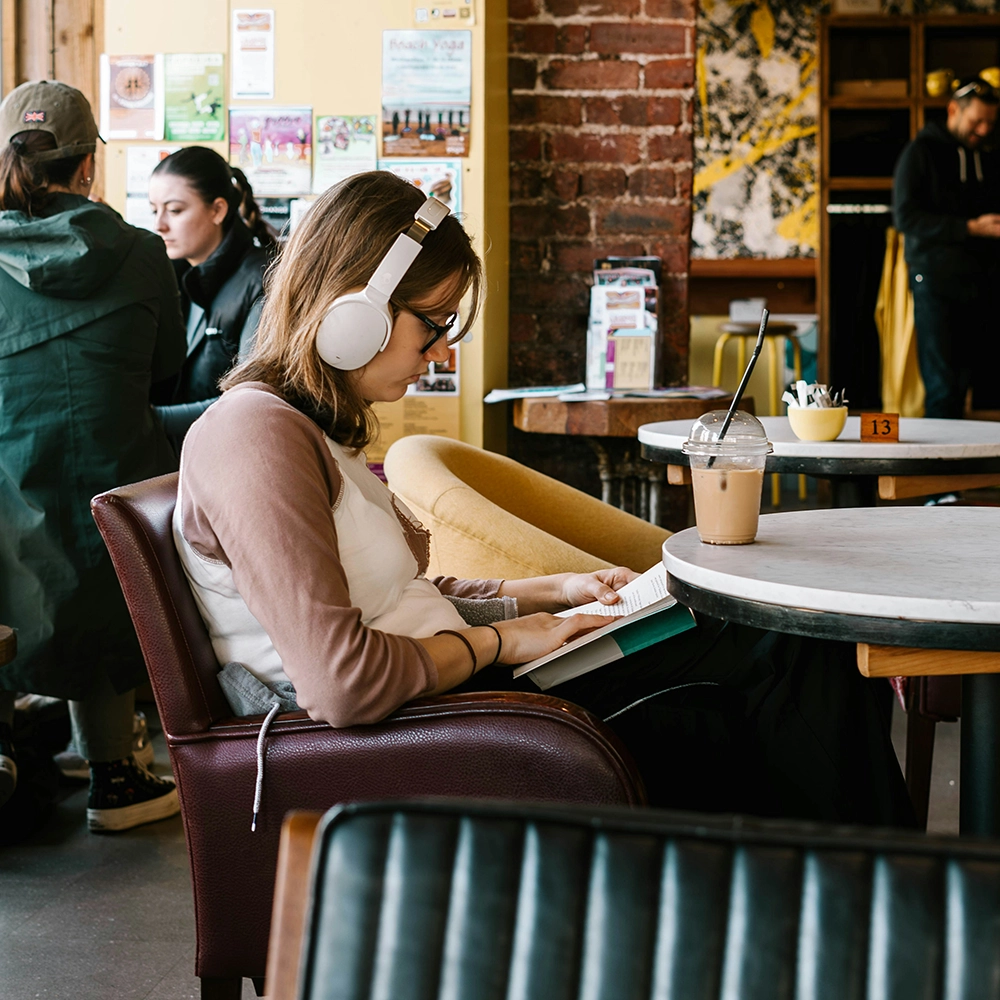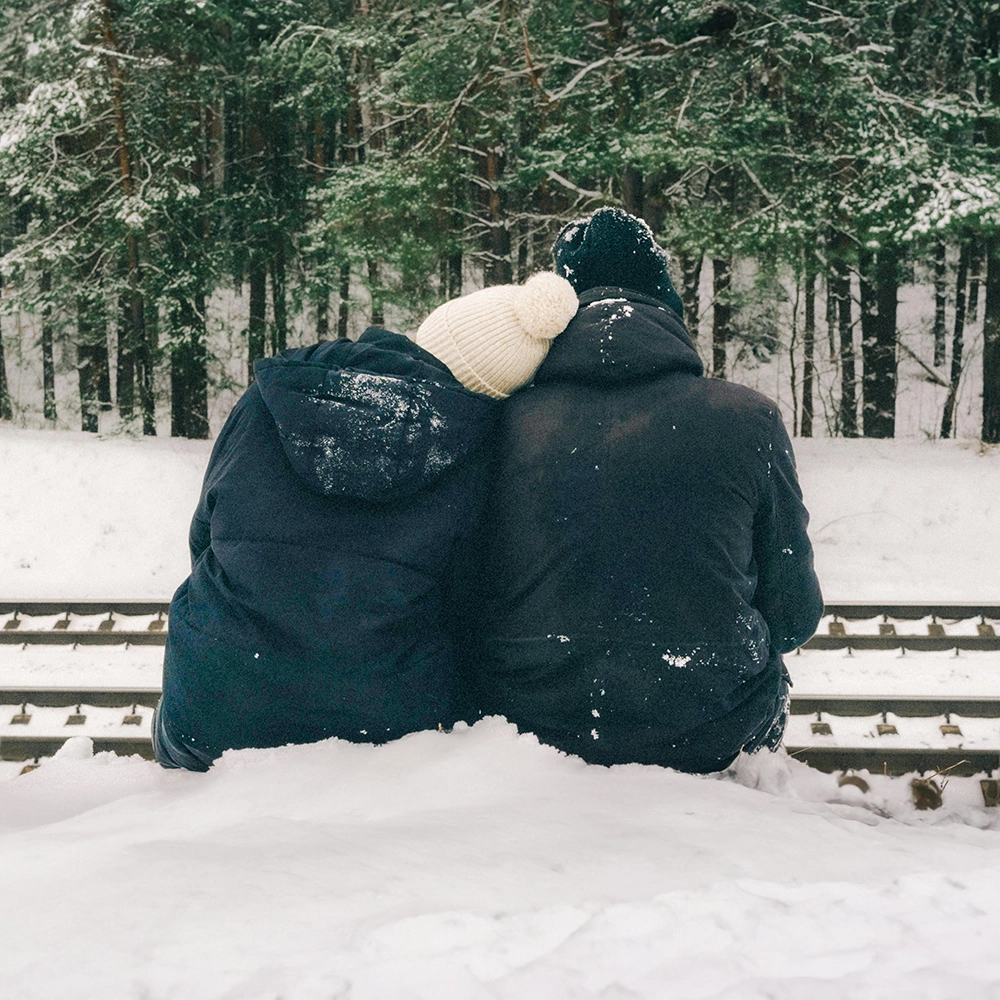One of the best parts of travel is meeting new people. If you’re an introvert, this is a double-edged sword. Yes, you love to meet new people (we’re not anti-social). But it can also be exhausting!
There’s a lot about travel that can be both invigorating and challenging. Knowing how to manage your energy as an introvert is the key to making the most of any trip.
With advice for how to travel alone without feeling awkward to tips for how introverts can be social in a new city, we have you covered with this tried-and-true guide.
1. Don't put too much pressure on yourself.
Introverts are often bombarded with messages that they should be more outgoing and talk more and meet more people. The subtle implication there is that being an introvert is somehow wrong and something to be overcome.
First of all, that’s not true. We even wrote an entire manifesto about how being an introvert can make you a great traveler.
Second, it’s not productive. You don’t have to be extroverted to enjoy travel and meet interesting people. And you certainly shouldn’t feel like you’re doing travel “wrong” just because you’re energized by different styles of connection and types of activities.
If you do feel like you’re doing it wrong, take a deep breath and give yourself some grace. Try to be proud of where you are. If that feels like a stretch, take comfort in knowing that where you are today can be temporary.
Take your trip in small steps if you’re uncomfortable. Dip your toe in a new experience rather than diving in right away. With time and patience, we bet you’ll love the space you create.
In my younger days, I almost always stayed in hostels when I traveled overseas. They were cheap, and I had a student budget. Confusing my introversion with shyness, I was always envious of the other guests who were more outgoing and pairing off with others for days of sightseeing. Surely, they were having more fun than I, the person who typically left her bunk early in the morning to roam around alone, never with a newfound friend.
Twenty years later, I’ve come to realize that I wasn’t wrong. Neither were the extroverted backpacker types. We just had different ways of experiencing travel. There was no reason to beat myself up for traveling solo.
2. Consider slow travel.
One method of slow travel is to settle in one destination and immerse yourself in that location. Because you aren’t hopping to a new site every day, it can feel like you become a temporary resident.
Slow travel can be ideal for introverts because it builds that sense of familiarity and depth we like so much in relationships. Solo Traveler World relates it to becoming part of the everyday social scene.
Spend enough time somewhere and you’ll start to recognize the grocer across the street, the waiter at your new favorite restaurant, or the woman walking to work each morning. You might even get to know them by name and feel more comfortable asking them for recommendations of what to see and do.
3. Plan meticulously, but don’t overschedule.
Winging your travel plans works for some people, but for many introverts, it’s as energy-sapping as an Italian family wedding (lots of people, boisterous dancing, yet another hug from an aunt you’ve never met).
By planning as much of your trip as possible before departure, you’re less likely to find yourself overwhelmed and trying to cope during the trip.
That doesn’t mean you need to pack your itinerary 100% full, though. You know as well as anyone that you’ll need time to step away from the fray and recharge your personal batteries. Build downtime into your schedule the same way you would an activity.
During a solo trip to Scotland, I knew I wanted to try haggis at some point. I planned to make that an activity, not just a meal, and did the research to find a restaurant the same way I would have any other attraction.
Alternatively, on the same trip, I knew I wouldn’t have it in me to figure out dinner after a full day of sightseeing with strangers. Rather than stretching my already-low social battery, I gladly had a cold sandwich from the shop next to my hotel and ate it alone in my room. Making yet another decision — where to eat, how to get there, what to order — would have been brutal when all I wanted was to decompress. It wasn’t an exciting dinner, but it was what I needed.
4. Choose the right destination.
It’s no secret that some destinations attract more crowds than others. Daytona Beach at spring break time? Wow, that’s a lot of people. New York City at Christmas? No such thing as personal space.
When you’re trying to stay low-key to keep your introvert brain at ease, choose smaller locations with fewer crowds. Not only are you more likely to find space to be on your own, but when you are around people, you won’t feel like you’re constantly bumping shoulder to shoulder.
We made a list of our favorite travel destinations for introverts to help you get inspired.
5. Go at off-peak times.
Sometimes tip #4 sounds like you’re limiting yourself. If Venice is on your bucket list, then avoiding it completely is a major letdown.
Your best alternative in this case is to visit during the off-season or shoulder-season when you can still see the epic sites, just with fewer people around.
On a micro level, once you’re at your destination, try to visit individual sites outside of peak time. That might mean going to a museum first thing in the morning or having a later-than-normal lunch to avoid the midday rush.
6. Choose the right kinds of activities.
Just like some destinations are designed for crowds, so are some activities. Music festivals are always going to be jam-packed.
While you might still choose to go to a festival, balance it out with more solitary activities or by visiting places where it’s comfortable and acceptable for people to be alone together. Think about museums, churches, coffee shops (but not a chain restaurant), parks and other outdoor spaces, a city bench where you can sit and watch the goings-on of a typical day at your destination.
7. Choose the right kind of accommodations.
We’ve written before about finding the perfect place to stay, but as an introvert, it can be especially helpful to match the type of accommodations with how social you want to be.
Hostels and B&Bs
Hostels and bed & breakfasts are good for meeting people, since they have more communal spaces than a hotel. You’re bound to run into fellow travelers, so decide if that’s something you want.
I stayed in a B&B in Utah where all the guests ate breakfast together, family style. That was a bit too much forced interaction for my liking. But at a B&B in Aberdeen, Scotland, the dining area had separate tables. You could chat with the other guests, or not. I found that much more enjoyable.
Hotels
Hotels are good for retreating. You have a lobby, and maybe a restaurant or bar for when you want to be around people. Unlike a B&B, though, it’s less likely to raise a few eyebrows if you decide to stay in your room and never show your face.
Because of this, hotels are a good middle ground on the social/solitude spectrum.
Airbnb
If hostels, where you might be in a bunk room with 30 other people, are at one end of the spectrum, then vacation rentals are at the other. It’s possible to check into an Airbnb and never see another soul.
You’ll never lack for moments of solitude, but rentals can feel isolating. If this is a concern, look for one that’s in a neighborhood with coffee shops or other community spaces.
Couchsurfing
Couchsurfing — staying on someone’s couch or guest room for the night — can be really nice on the budget. But they also put a lot of pressure on you to chat with strangers. Generally, this is not the best option for introverts.
Single supplements
One more note before moving on from accommodations. On cruises and group tours, it’s common for there to be a single supplement fee if you’re a solo traveler and don’t want to share a room. Like most things, there are pros and cons to paying the fee versus getting an assigned roommate.
As a frugal (my mother would say miserly) introvert, I usually bypass paying the fee on group tours. I’ve been lucky enough to have good roommates, and it has helped me to not get too lonely.
I’m confident enough to say, “I’m going to go get something to eat,” and just leave on my own. But it was also nice to have the option of, “I’m going to get something to eat. Do you want to come with me?”
Others will say it’s better to pay the single supplement fee so that you have guaranteed space to recharge your social batteries in solitude. They even say you should order room service for at least one of your meals every day so you aren’t always stuck with the social pressures of dining as a group.
There’s no right or wrong answer here. Take some time to reflect on your style — as an introvert, you’re good at introspection — and choose what works best for you.
8. Book low-pressure “group” activities.
Big group tours — 30 or more people, on a bus — probably aren’t for you if you’re an introvert. (And if you’ve made it to tip #8, you probably are.) If you don’t want a totally solo trip either, though, you have options.
Look for small group tours of 10 people or less. You might stick with that group your entire trip, or you might decide a day tour for a smaller dose of social time is a better fit.
That turned out to be the best choice for me on that solo trip to Scotland. After about a week of being on my own, I hopped in a van with a kilted guide and about a dozen other people.
After a few hours of driving around to countryside castles, we all went our separate ways. I don’t remember anyone’s name and we didn’t become fast friends, but I had an enjoyable afternoon in the company of other people who geeked out over ruins, and then I had a nice dinner by myself. It remains one of the highlights of my trip.
Other low-pressure, small-group options include classes or private tours. Culinary classes, especially in places like Italy and France, are popular. Sign up to learn how to make pasta or a macarons. Bike tours are also ideal in part because you can’t be expected to make conversation while riding.
How to pick the best tour groups for introverts
There are reasons you might want to book a group tour, even if you’re introverted. I like group tours in places where I don’t speak the language or if I have safety concerns as a solo female traveler. Ask these questions to help you decide if a group is introvert-friendly.
- Are there options to dine solo? Some groups expect everyone to eat every meal together. You might decide during the trip that you like your companions, and eating together is enjoyable. But you’ll appreciate having the option to take a raincheck when you want it.
- Is there downtime built into the itinerary? Having someone else arrange details of tours and excursions is an advantage of organized tours. As an introvert, though, you may want to have some empty spaces in the itinerary so that you have the flexibility to do something on your own or decompress in your room for a bit.
- What types of activities are planned? Some activities — yoga, meditation, art, museums — don’t require high levels of social interaction. You might be taking a class together, but the experience is quite internal. These can help keep your energy levels high, even in the company of others.
- How big is the average group? As a general rule of thumb, more than 30 is too many for comfort. Fewer than 10 and it can start to feel too intimate with high social pressure.
- How long is the tour? Some people prefer shorter tours because they know after a few days, they’ll be able to break away from the group and have their own time again. More than a week with near-constant company might start to feel too draining.
These questions are also helpful if you’re considering an all-inclusive resort, cruise, or retreat.
9. Pick the right travel companions ... or not.
I love traveling with other introverts. They’re the perfect answer to how to travel alone without feeling awkward. They understand your desire to sometimes be on your own, and you’ll never have to utter, “I'm not angry. I just need a break." And they’re probably never going to drag you to a club because they just know you’ll have fun if you’d only try it.
Traveling with another introvert can also help you create a safe social bubble, too. You have each other for company, and you don’t have to repeatedly put yourself out there with strangers, striking up a conversation that zaps all your energy.
But sometimes you want to really, truly travel on your own. So if you don’t want to pick a travel companion, you don’t have to. Take the solo trip.
How to tell your partner you want to travel alone
Traveling alone means you have to leave people behind at home. If you have a partner or family, that can come off as being selfish or hurtful. You can be respectful and still strike out on our own.
Have an open, transparent conversation with them about why you want to travel solo. Tell them what your goals are for the trip, why it’s beneficial for you to have some adventures on your own.
Also make it clear that this trip — and how you travel — is about you, not them. They might need some reassurance that this isn’t a precursor to breaking up or that you’re trying to escape from them.
You can also reassure them that traveling alone isn’t an all-the-time choice. In my experience, it’s as simple as telling my partner, “I’m looking forward to going somewhere with you in the spring." Now he knows that the fact I booked a solo cruise in February isn’t a sign of dissatisfaction; it just happens to be what this particular trip looks like.
Finally, include your partner or family in the planning, at least a little bit. Make sure your trip doesn’t interfere with joint activities or commitments. Your decision will sting more if you miss someone’s birthday or if you have to cancel other plans you made months ago.
10. Tell travel companions what you need.
When you’re traveling with other people, it’s helpful to let them know before the trip how your energy levels work. Making it clear from the start that you’ll need periodic time to yourself or that you're not a fan of large gatherings will help you avoid problems later.
Be honest with them during the trip, too. After a few days touring Charleston, South Carolina, I was drained. My partner and I decided to order pizza for dinner at our Airbnb, and I asked him if he minded picking it up himself so I could have a few minutes to sit and read.
Knowing how important my “me time” is, he readily agreed. It was less than 30 minutes before he came back with food, but it was exactly what I needed to feel like a calmer version of myself again.
11. Know how to manage your anxiety.
Before diving into this, let’s get one thing clear: being an introvert does not mean you have social anxiety or vice versa. I simply include this on a list of travel tips for introverts because I know from experience that when my social batteries are low and I’m tired, it’s more difficult to manage my stress and anxiety.
If you have travel or social anxiety, it can be helpful to talk with a medical professional before your trip about how you’ll manage it from the road. This can include everything from coping techniques to practice on your own to telehealth appointments when you need to talk to someone to medication. Ask your doctor what’s right for you.
I find it helpful to know what types of situations increase my stress so that I can either avoid them, limit my time in those situations, or have a strategy for how to handle my emotions when they can’t be avoided. Here are some examples:
- When I have a connecting flight, I tend to choose a slightly longer layover than necessary. If I have to rush between gates, there’s not enough recovery time between being crammed in with other passengers on each of the flights. I like some time to sit at an empty gate for a few minutes or browse in uncrowded shops.
- I pack a lot of snacks. One, food is comforting to me. Two, when my blood sugar drops, I have a hard time making decisions. And three, sometimes I don’t want to go to a restaurant or a store to find food. Having my own stash buys me time. Then, when I’ve recharged my batteries, I’m better at interacting with the outside world.
- I get up early. Morning is usually the quietest part of the day, especially in touristy spots. I take advantage of the fact that I’m naturally an early riser to have breakfast in peace and make my way to my first sightseeing stop before the hustle and bustle reaches full speed.
- When I want to stop feeling lonely when I travel alone, I go to independent restaurants and cafes. It’s not always the case, but you’re more likely to get personal attention from employees at a small shop than at a chain store. A friendly smile and a quick chat about the local bakery where they get their scones is a cozy antidote when you’re feeling lonely.
12. Eat alone.
Eating alone is a common fear. Some people rank it right up there with public speaking and snakes. While you might never love going to a restaurant by yourself, it can provide valuable downtime. Try these ways to put yourself at ease when you do dine solo.
My personal favorite strategy is to take a book or a journal with me. I can take notes about what I saw during the day, write down where I took pictures (how many times do you get home and think, “Why did I take a picture of that?”), or simply unwind in a story.
Reading and writing are solitary activities, so it’s not socially rude or awkward to do them, even in public, even at a restaurant. So order a nice meal and dive into that novel.
Some people like to eat at the bar if they’re traveling solo. They feel less conspicuous than if they’re taking up an entire table by themselves.
That’s not my usual favorite because sometimes you get stuck chatting with other lone diners or the bartender. I prefer a table for two, ideally by a window where I can do some people watching.
Solo Traveler World recommends booking a communal table, going somewhere like a bierhaus where everyone eats together, or attending a dinner show. As long as you’re up for small talk — can you believe the size of these pretzels?!? — these can be good ways to meet other people when you travel. You know that at the end of the meal you can go your separate ways and there’s no pressure to continue traveling together.
13. Revisit your favorite spots.
One of the characteristics of an introvert is a preference for meaningful conversations rather than surface-level interactions. If we had our way, we’d skip right past, “So what do you do for a living?” and go straight to “Let me tell you about this interesting book I read.”
To replicate this feeling of familiarity and connectedness, try visiting the same spot regularly. Maybe you have your coffee and croissant at the same cafe every morning. It could be that you take your book to the same park after lunch.
Seeing a familiar face, even if it’s just the barista or a guy on his daily dog walk, can create a sense of comfortability when everything else during travel feels unfamiliar.
14. Create a cocoon.
What do you do when you just can’t get the social break you need? You're stuck in the middle seat on the airplane, next to a talker. You finally got a reservation for the restaurant you’ve been dying to try, but it’s just so busy!
You need a way to be alone in a crowd. Create a personal cocoon to create the illusion of solitude, even when you’re surrounded.
For some, it’s enough to pop on their headphones. It’s a good way to signal to other people that you want to be left alone. Choose some music that’s relaxing, and you can start to dissociate from your immediate surroundings just enough to let the tension go.
This might be a good time to whip out that travel journal you use at restaurants when eating alone. Crack open a book. If you’re traveling with someone, ask them to run interference. They can take over a conversation for you, or literally step between you and potential interactions for a few minutes so you can catch your breath.
15. Give yourself an out of conversations.
When someone starts to get a little too chatty, you might need a way to politely excuse yourself from the conversation. The good news is that it’s actually easier to do this while traveling than during everyday life.
Simply tell them that you just saw something you want to take a picture of and need to run before the opportunity is gone. Or that you left something in your hotel room you need to get. Or that you have to go meet up with your tour (the tour doesn’t have to actually exist). Or that you need to make a phone call; blame the different time zones if it’s a strange time of day to call someone. Maybe you “need” to use the restroom before the bus leaves. Take your pick.
16. Ask for — and accept — help.
If your brand of introversion makes it difficult to reach out or take the first step with others, it can be especially difficult to ask for help. And there are plenty of times when we travel that we need help.
Remember that even though you’re an introvert, you still possess the skills and abilities to act extroverted. You’re still a social being. It might deplete your social batteries more quickly, but you can ask for directions, ask for restaurant recommendations, ask how to pronounce that tricky Welsh town name, and so much more.
And don’t forget that asking questions is a great way to start a conversation when you’re starved for connection. If you find yourself feeling lonely, ask the person next to you on the bus what their favorite part of the city is. It’s an open-ended question that shows interest in them and their hometown, making it a great social opener.
17. Trust your gut.
Safety is paramount, whether you’re traveling solo or with other people. As an introvert who’s maybe stretching their definition of being comfortable in foreign social situations, remember that there’s a difference between stepping outside your comfort zone and being unsafe.
It can be tough to figure out where that line is, so when in doubt, go with the safe option. If your instincts are telling you that something feels wrong, trust them.
18. Don’t be afraid to be different.
We said all the way up in #1 that we don’t have to buy into the myth that introversion is something to be defeated. The truth remains that you should proudly be the introvert you are.
At the same time, we understand that travel throws us into social situations that can be challenging. There’s only so much challenge we can handle before we’re downright exhausted.
The answer is balance. You can be boldly different while staying true to yourself. If a destination is completely new, balance it with activities that are more familiar and energizing. If you’re returning to a familiar vacation spot, try an outing that you’ve never done before.
Plan Well with Travel Insurance
As you continue making your travel plans and deciding what the perfect vacation looks like for you, remember to keep it safe and minimize your risk. Travel insurance can protect the money you spend for your trip — against cancellations, delays, and more — as well as your health and your belongings.
Find the best travel insurance plan for you and get a quick quote online at SevenCorners.com.


